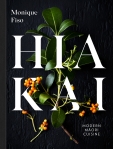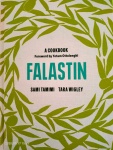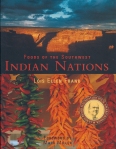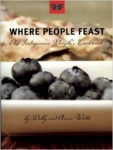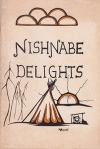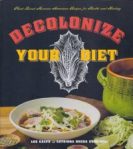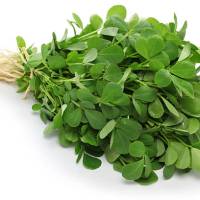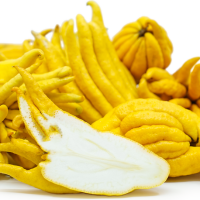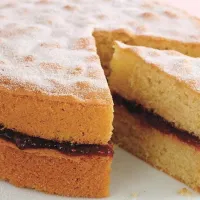As a self-confessed recipe pedant I do admit to taking pleasure, of a gleeful sort, in a badly written recipe. I can scoff and ridicule and feel sanctimonious and self righteous over the clear inadequacies of a gram mistaken for an ounce, a tablespoon for a teaspoon and Fahrenheit for a celsius. But pride goeth before a fall and it isn’t long till I realise that behind these seemingly small mistakes lies a wealth of skill, knowledge and experience I will never have, and (here comes the next and hopefully last platitude) people in glass houses should never throw stones!
Just think of how very difficult it must have been for those cooks trying to use the recipes of Sir Kenelme Digbie from his 1669 book The Closet Opened. For instance, just look at his recipe:
TO MAKE AN EXCELLENT SYRUP OF APPLES:
‘Slice a dozen or twenty Pippins into thin slices, and lay them in a deep dish, stratum super stratum, with pure double refined Sugar in powder. Put two or three spoonfuls of water to them, and cover them close with another dish, luting their joyning that nothing may expire. Then set them into an oven. And when you take out the dish, you will have an excellent Syrup, and the remaining substance of the Apples will be insipid.’
Where to begin. Well, is it a dozen or twenty apples, or just what’s to hand? How much sugar, a tablespoon, or ten? And the oven. What temperature? Was it even possible to regulate an oven in 1669 or did everyone share a secret skill only known to those inducted into the ‘Mysteries of the Oven’. ‘When you take them out” – yes but after how long? One hour, 6 minutes, three days? Ok, ok, I know it won’t be three days, but…
Thank goodness for Eliza Acton, who published in 1845 Modern Cookery for Private Families, the first book which was aimed, not at the professional cooks of large households, but at those of small households. Eliza’s book was significant in being the first cookery book in which detailed instructions are given, ingredients listed and possible problems discussed. Louise Peskett, posting for Brighton Museum notes that:
‘Modern Cookery bucked a trend. It was the first book of recipes aimed at the interested home amateur rather than a professional chef. It was also the first recipe book to list the ingredients and quantities required – plus cooking times – separately from the method, something so obviously sensible, it’s hard for us to imagine that recipes could ever be otherwise.’
Here is an example of method first, ingredients second, followed by observations in her recipe for Ingoldsby Christmas Pudding.

Tonbridge Historical Society considers Eliza Acton the first modern cookery writer, preceding Mrs Beeton by several years. Delia Smith has called her ‘the best writer of recipes in the English language’. Elizabeth David, Jane Grigson, Clarissa Dickson-Wright and Rick Stein all claim to be influenced by her work.



Eliza Acton
However, in 1861 Mrs Isabella Beeton produced her famous Book of Household Management, which sold millions of copies and eclipsed Modern Cookery. Modern Cookery remained in print until 1918, when Longmans took the decision not to republish. Acton’s works remained out of print until 1968 when a selection of her recipes was collected into The Best of Eliza Acton, edited by Elizabeth Ray and including an introduction by Elizabeth David. Modern Cookery was not reprinted in full until 1994. Thrift Books offer seven of her cookery books as well as a volume of her poetry.
In fact Mrs Beeton ‘borrowed’ 150 recipes from Eliza. However, a significant difference between the books was in the presentation of the recipe: Modern Cookery provides the method of cooking followed by a list of the required ingredients, the recipes in Mrs Beeton’s Book of Household Management list the timings and components before the cooking process.


Which brings me back again to the writing of recipes. There are lots of sites purporting to instruct you on the correct writing of a recipe but it is Dianne Jacob’s Will Write for Food blog which caught my eye when she wrote about the 7 Most Common Recipe Writing Errors and included one of my pet peeves, ‘ingredients out of order’, as well as ‘missing ingredients’ and ‘wrong amounts’. Don’t you think ‘errors’ in writing are so much more interesting than ‘the correct writing’? They make you stretch. Dianne Jacob’s 7 More Most Common Recipe Writing Errors is also gold and had me shouting at the screen as I recognised each and every one of them. These were my favourites:
Incomplete directions. “Toast cumin seeds and grind them.” Unless your readership comprises Indian cooks, they’re probably going to need a few more clues. Remember that your readership is probably less sophisticated in the kitchen than you are, and they don’t want to feel intimidated.
Action takes place without vessels or tools. “Beat butter with sugar until creamy.” Where does this action take place? On your countertop? With your hands? Or “Bring cream to a boil.” Missing are: in a bowl, in what size saucepan, over what kind of heat. It’s also useful to mention a stand mixer, electric mixer, or a wooden spoon to help your reader along.
Duplicate approximations of timing. If you say it takes “about 3-5 minutes,” you have two approximations. “About” is the first, and the range of time is the second. Use either “3-5 minutes,” or “about 5 minutes.”
I do not, however, write recipes I simply appreciate a well written one. No, rather my interest is in using a recipe to produce what they say is the dish that will result if the ingredients are carefully gathered and the methods or instructions followed. There are lots of ways to trip yourself up approaching a new recipe and lots of new skills that you can learn. There is knowledge and skills to be gained from lists of cookery jargon, for instance, The Giant List of Cookery Terms Every Chef Knows, or Cooking Terms from A-Z for Absolute Beginners, or even You Want Me To Do What? – cookery jargon explained. All useful, all filed never to be looked at again.
My latest curiosity and sometimes sighing point is the tendency for cookery book writers to be imprecise about ordinary terms, and to invent new terms.
What do I mean, Well, imprecision:
- A dollop – yes, I know only certain items can be dolloped but how big is a dollop? And as for a knob. How big is that lump, bump, protuberance, or bulge.
- Is a small bunch the same as a good bunch or a small handful, a good handful, a couple of handfuls. Whose hand/bunch
- Is a drizzle the same as a trickle or a touch of or a sprinkle or a splash or a squeeze?
- Can a chop – as in finely or coarsely – be the same as a dice or a mince?
But my bemusement reaches its nadir with the newest of terms:
- Spiked (as in miso spiked hummus);
- Buddy-up (as in make close friends or put the oranges with the lettuce?)
- Let down (disappoint your muhammara or loosen it with oil?)
- Tumble, throw in, toss to coat (does it matter what distance you do this from 10inches – 10feet?)
- Roughly swipe (you mean I have been too gentle in the past?)
- Bash (no, no, no, much too violent)
- Blipping – as in barely blipping (I did not know water did this!)
Personal favourites are:
A scrap of, and a whisper of. I hope Eliza Ascot is not tossing in her grave as she is let down by being roughly swiped and bashed and spiked.
Social historian, Louise Peskett felt that, ‘Some of the recipes in Modern Cookery for Private Families such as pineapple marmalade, Lemon Dumplings, and Mushrooms Au Beurre are begging to be rediscovered’, and so I am offering Eliza Ascot’s Mushrooms Au Beurre for you as this week’s recipe. They are delicious.

Weekly Recipe


